English Name(s) Camel Pose Pronunciation /uːˈstrɑːsənə/ Strengthens Human back | Sanskrit उष्ट्रासन; Uṣṭrāsana Asana Type Kneeling Asanas Pose type Backbend, Chest opener | |
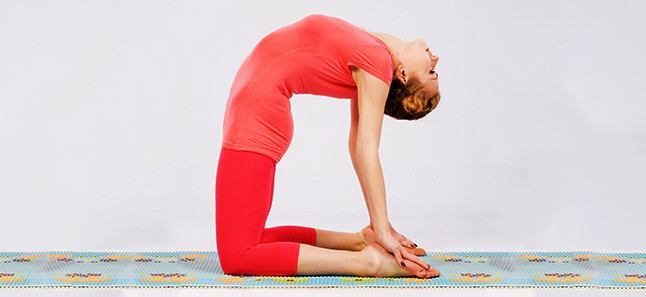 | ||
Meaning Uṭra: "camel"āsana: "posture" dṛṣṭi (gaze) नासाग्र दृष्टि / nāsāgra dṛṣṭi (to nose) Note Don't collapse in your neck area. Consult a doctor before beginning an exercise regime. Stretches Abdomen, Thorax, Thigh, Ankle, Throat, Groin Preparatory poses Dhanurasana, Bhujangasana, Salabhasana, Virasana, Supta Virasana, Urdhvamukha shvanasana Follow-up poses Dhanurasana, Sarvangasana, Chakrasana, Dandasana, Virasana, Janusirsasana Similar Dhanurasana, Bhujangasana, Trikonasana, Uttanasana, Half Lord of the Fishe | ||
Camel pose ustrasana yoga
Ustrasana (/uːˈstrɑːsənə/ oo-STRAH-sə-nə; Sanskrit: उष्ट्रासन; IAST: Uṣṭrāsana), Ushtrasana, or Camel Pose is an asana.
Contents
- Camel pose ustrasana yoga
- Foundations of yoga camel pose ustrasana
- Etymology
- Description
- Anatomical focus
- Benefits
- Contraindications and cautions
- References
Foundations of yoga camel pose ustrasana
Etymology
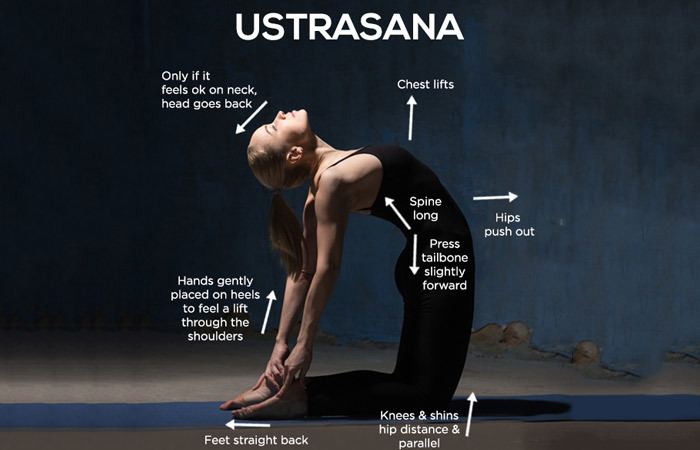
The name comes from the Sanskrit words Ushtra , Uṣṭra) meaning "camel", and Asana (आसन, Āsana) meaning "posture" or "seat".
Description
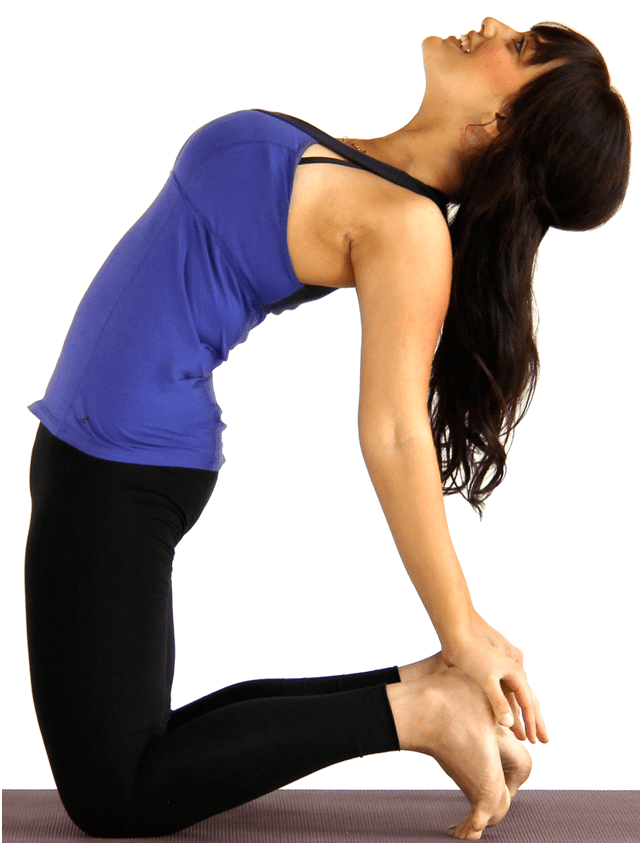
It is a very deep backward bend performed in a kneeling position. Many people find backbends difficult or challenging, because bending backwards is not an activity with which most are familiar.
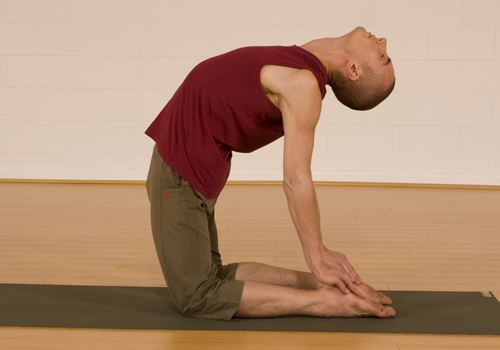
After performing Ustrasana, the pulse rate will often have increased considerably, while the breathing should be deep and slow.
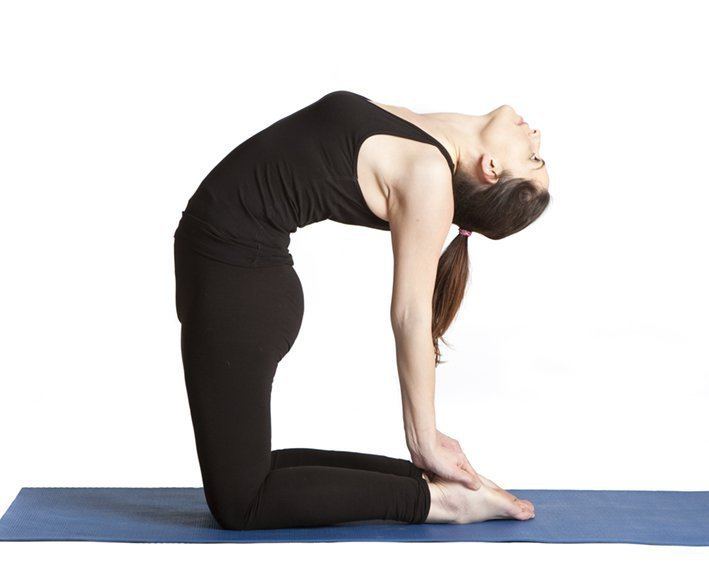
A deeper stretch can be achieved by separating the knees slightly wider at the outset. The "full expression" of camel varies widely between practitioners, with some finding it quite difficult to progress beyond a slight backward lean; at its deepest the head can be between the knees.
Anatomical focus
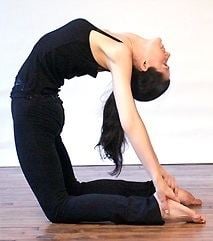
At a stretch it opens the whole of the front of the body, including the hip flexors and pectoral muscles. Traditionally it is seen as opening the "heart centre".
Benefits
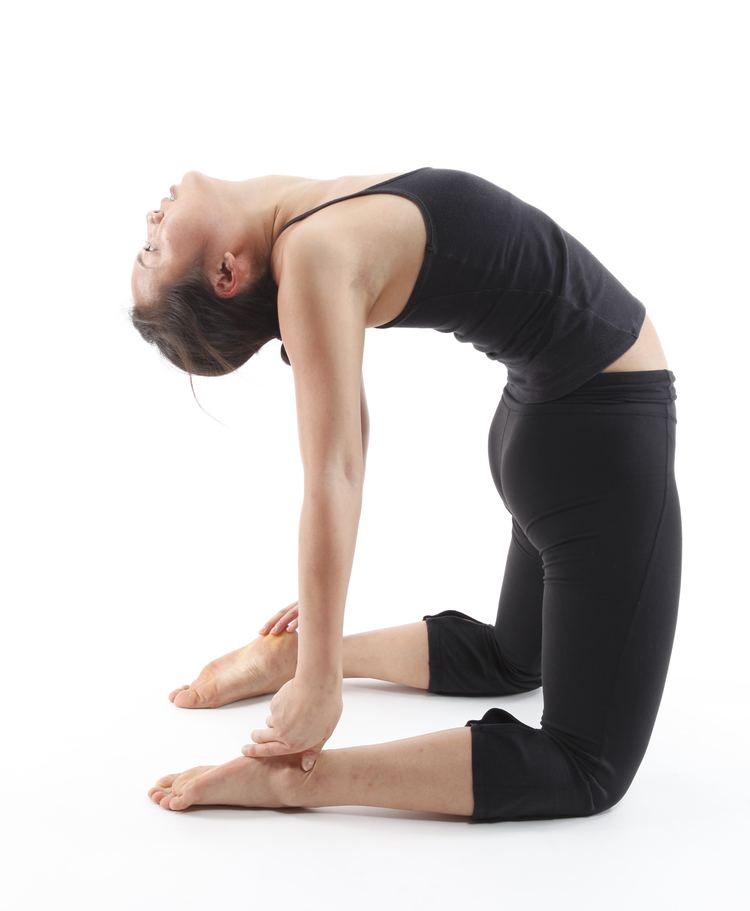
The asana improves core strength, spinal, hip and shoulder flexibility and stamina, and is one of the 26 asanas included in the Bikram Yoga sequence. It makes our body fit.
Contraindications and cautions
Don't collapse in your neck area, so that the blood vessels that bring blood and oxygen to the brain are not compressed, otherwise you may feel dizzy, get unstable and the overall posture becomes unsafe. Practicing Ustrasana can make many beginners new to yoga feel distinctly ill, with lightheadedness or nausea being quite common after-effects. However, this does usually improve with practice.
